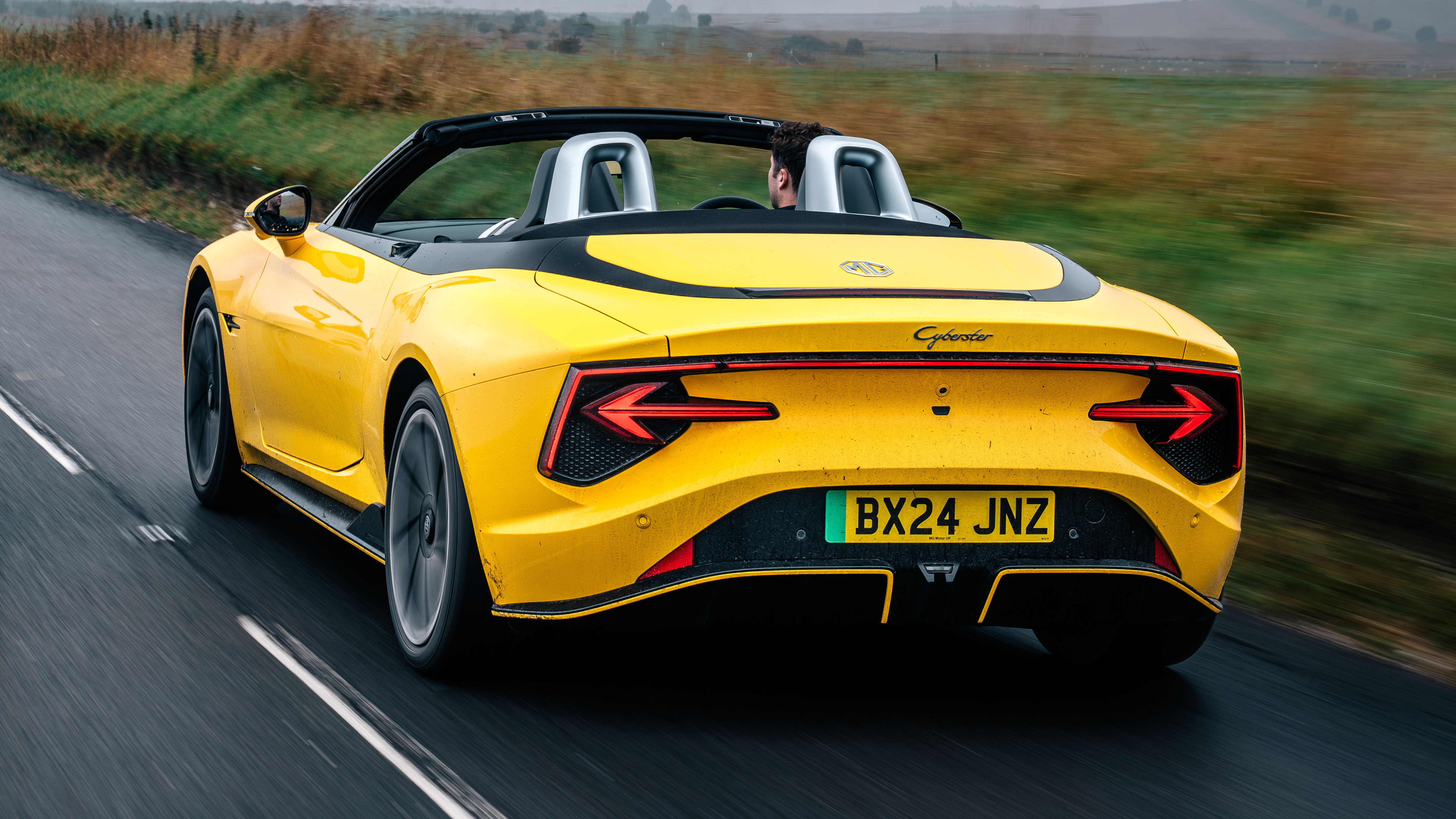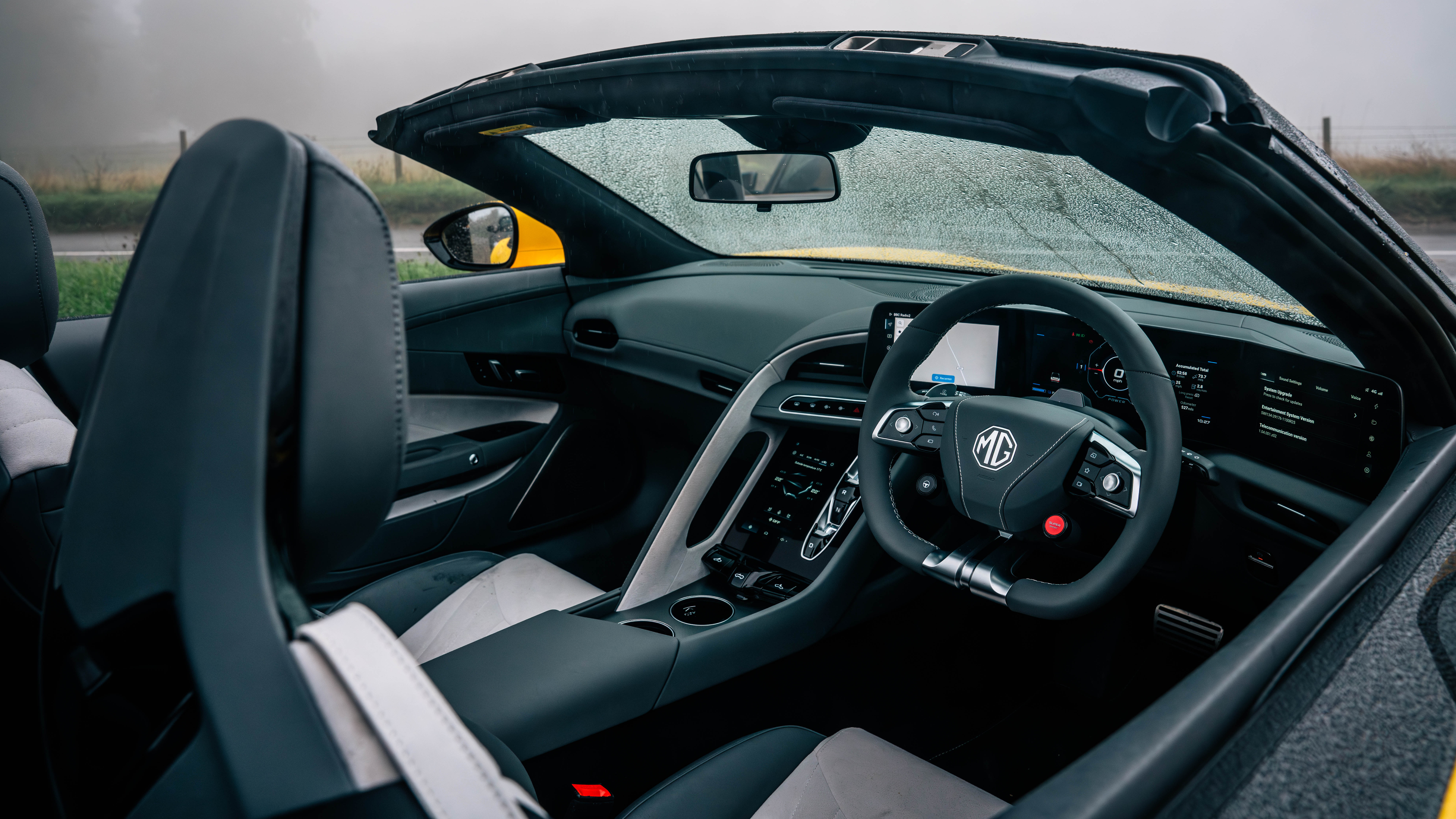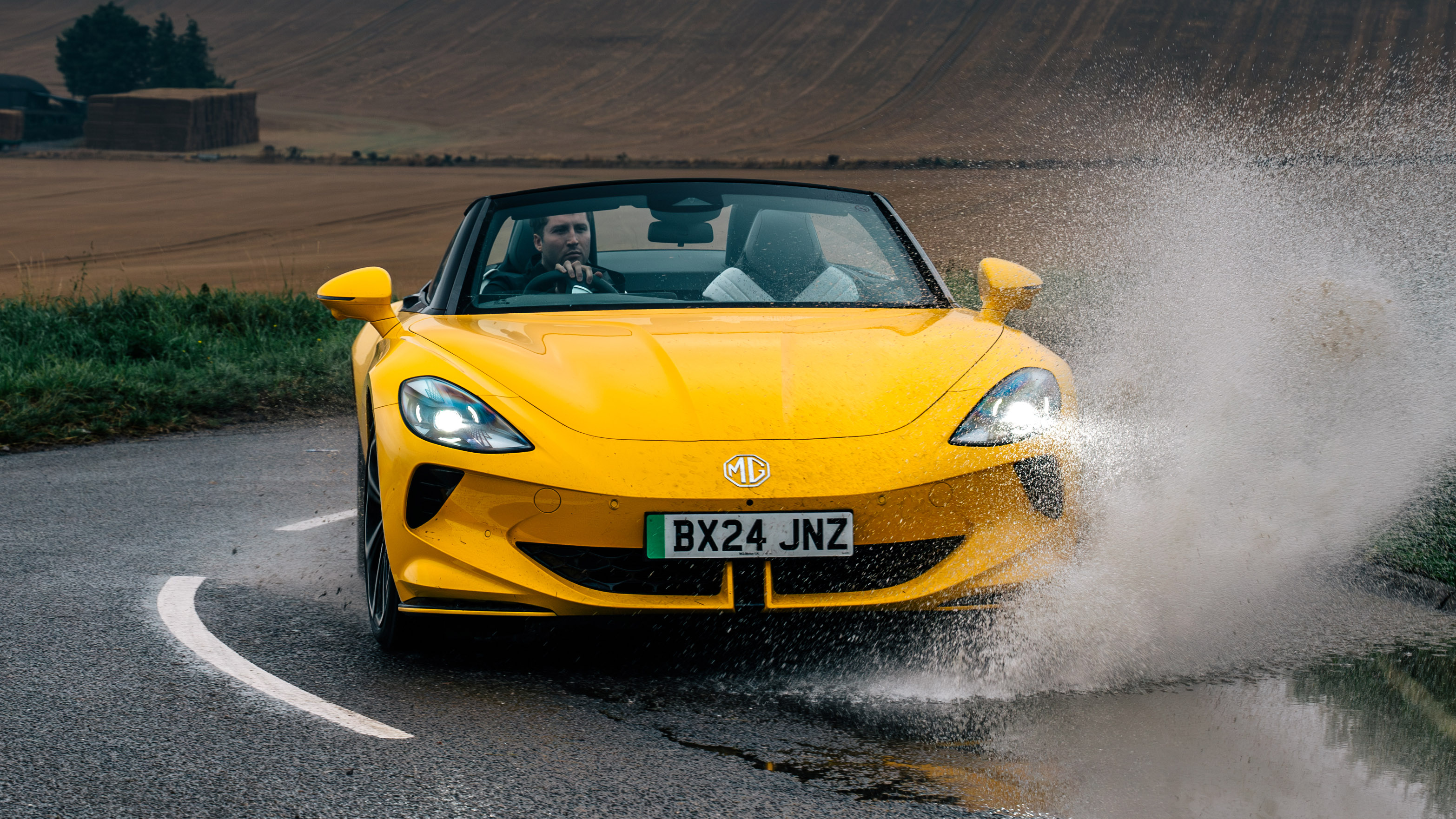
Interior
What is it like on the inside?
It’s a promising place to be right, from the off. Slinking under the standard scissor doors is a novelty that doesn’t wear off during our day with the car and zapping them closed with the centre console switches is fun, too, although you'll constantly need to point out the switch to confused passengers. The driver-focused dash design is certainly dramatic, and smartly sized steering wheel with a thick rim akin to recent BMWs sits before you. In China, MG offers the car with a yoke; the UK team had no interest in bringing it to our shores.
Which we’re more than fine with. This is a quality wheel to hold with well-placed paddleshifters, meaning you instinctively keep pulling them even though they don’t shift gears, instead cycling through the different drive modes as you exit corners. Oops. Perhaps it’s an opportunity to incorporate faux ratios like Hyundai further down the line.
Ergonomics are a mixed bag, though kudos to MG for fitting a row of fixed climate controls, even if the buttons sit flush and still need a distracted glance (and a chastising bong from the car) to use. Its strenuous UK development added lumbar support to the seats as well as dropping them closer to the ground, even if the battery pack stops this from being a proper, bum-slung-on-the-floor experience. Drivers over six foot probably ought to take a test drive to make sure their forehead doesn’t become an involuntary windbreak. The materials and finish throughout the cabin are strong and, at least in the box-fresh examples we drove, worthy of the price tag.
What about tech?
The four separate screens look a tad clumsy when the car is docile, but once their displays come to life, the layout begins to make sense. Rather than cycle through functions on the move, you can have Apple CarPlay (or Android Auto) upper left, the air con below, energy displays and the reversing camera to your right and the configurable digital dials slap-bang ahead. Those boast a cute octagonal power meter that mimics an old-fashioned rev counter.
MG opted to override some of the chintzy graphics we found on our first Chinese drive of the Cyberster, and this is a twee but likeable solution. Though the screens are all relatively small, making the CarPlay in particular look undernourished. We also found it tricky to get in a seating position where all of the screens were visible and the steering wheel was still usable. Everything is angled at the driver, too, meaning your passenger may feel excluded on a long road trip.
Roof up, it’s an exceedingly refined car. The fabric hood is quick and sophisticated in its motion and with the cabin open you can drive up to 60mph before wind noise really muscles its way into the experience. At least it’s not robbing you of a sonorous soundtrack. The wind doesn’t physically intrude the interior, either, while the standard-fit Bose stereo punches hard above the sound.
The doors are a fun novelty and mostly intuitive to use: each has a single sensor, designed to stop the door biffing its user in the face as it whirrs up or down. The system is very safety-first so when entering the car you need to push the button then take a swift step back, which does feel overly performative. Oh and if it's rained, be warned: they may pour water onto the sills and carpets. But indulge yourself: the car will already be attracting attention. MG reckons the weight gain of such complex ingress and egress is negligible in the grand scheme of a two-ton EV.
The boot space is 249 litres regardless of version, up slightly on a Merc SL and down slightly on a Porsche 718 Boxster or BMW Z4. Of course, they’re all petrol cars without batteries or rear motor gubbins to worry about. At least for now…
Featured

Trending this week
- Car Review
BMW iX3






